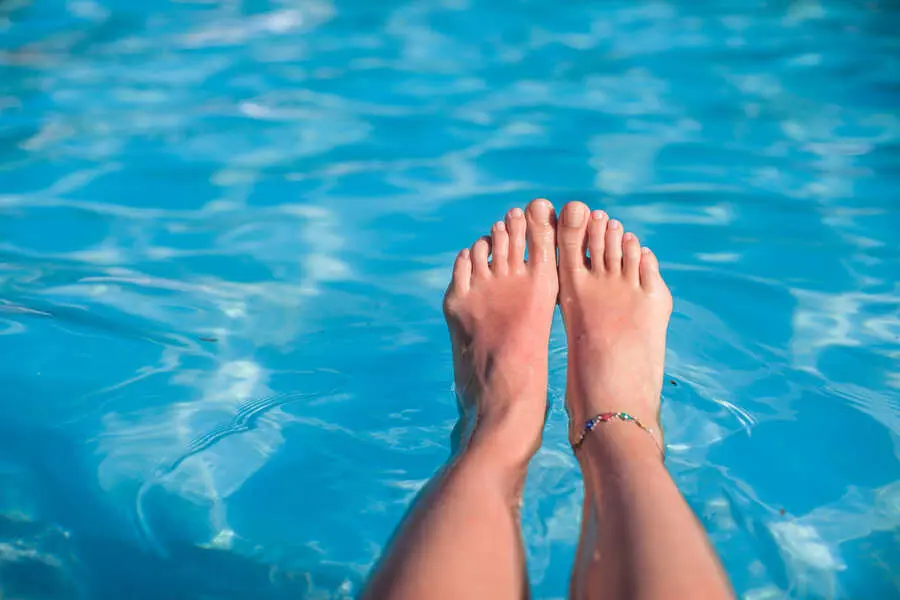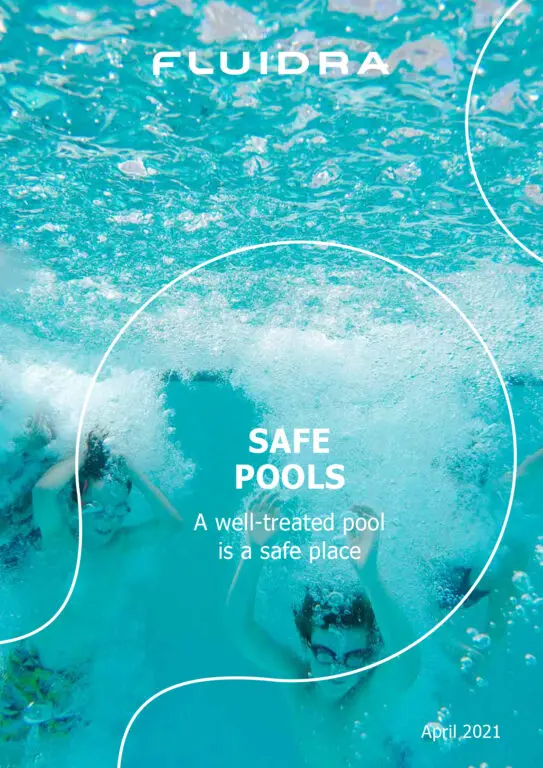
Alkalinity, or total alkalinity, is the measurement of the alkaline salts within the water and their ability to neutralise acids. This is very important to keep pool water clean and safe. Here, we will discuss how to reduce pool alkalinity and keep pool pH balanced.
Alkaline salts are calcium and magnesium, expressed in ppm or mg/l. Controlling alkalinity prevents sudden pH changes, which is key to ensuring chlorine disinfects the water effectively.
The recommended range for a swimming pool’s total alkalinity is between 100 and 150 ppm. Total alkalinity refers to the ability of the pool water to resist pH change. When a substance and other pool chemicals are added to pool water, total alkalinity will react to keep the pH in the desired range (7.2 – 7.8).
If the value is higher than 150 ppm the water can become cloudy and the pH will drift upward. When the total alkalinity value is less than 100 ppm the pH may become unstable.
There are several factors that can alter alkalinity. Among them are:
- Changes in the volume of water due to evaporation, which causes a concentration of calcium carbonate.
- Lotions, sun creams, sweat and residues.
- Contact with carbonate rocks.
- Incorrect use of chemical products.
- Malfunctions in the pool filtering system.
High alkalinity can cause an uncontrolled increase in pH, cloudy water, irritation in the eyes, throat and ears, and scaling on the walls and pool accessories. In turn, high pH decreases the effectiveness of chlorine and other disinfectant treatments.
One way to reduce alkalinity is to add acidic compounds and pH reducers. Generally, the acidic properties of these products react with the carbonated or bicarbonate alkalinity to produce carbon dioxide, expelling the carbon responsible for the high alkalinity in the form of gas.
These come in liquid, powder or tablet formats. Once the alkalinity level begins to stabilise, it will take 48 hours to rebalance the pH levels of the pool. Similarly, hydrochloric acid is highly recommended to reduce pool alkalinity quickly and effectively.
Calcium carbonate scale could be removed with weak acid solutions, such as acetic acid. The pool should be empty during this procedure.
The correction of low alkalinity is a bit more complicated, as it may cause pool pH levels to fluctuate. It’s usually caused by malfunction of the pool filtration systems or lack of adequate maintenance. For example, trichloroisocyanuric acid tablets can make the water too acidic.
Low alkalinity and unstable pH levels cause corrosion and stains on fittings and metal parts, stress on filtering systems, irritation of eyes, nose, throat and skin, and inefficient disinfection. If the pool pH is low, green water may also appear.
Unlike in cases where the alkalinity tends to increase, a decrease in alkalinity requires much greater precision. It is recommended to calculate the volume of water in the pool and the pH at the time of maintenance. Then, apply an alkalinity increaser, usually sodium bicarbonate. Following the dosage indications will be essential to achieving the desired results.
If you’re wondering how to reduce pool alkalinity, Fluidra offers automatic control systems ideal to control large commercial or public pool facilities. These maintain the optimal water pH parameters, making maintenance more efficient and sustainable offering peace of mind for the operator.
- AP PR Series is the professional choice for control and dosing. The integrated panels based on controllers provide the best authentically ‘“Plug & Play” solution, pre-assembled on a panel to control pH, ORP and free chlorine in the water.
- Guardian Pool combines traditional control and dosing elements with total digital control of its values. This facilitates the management of the pool parameters, as well as the ability to analyse or detect possible errors with historic data.
- Freepool2 uses the Neolysis system to correct the pH levels by injecting CO2 instead of acid. UV lamps also negate the need for chemical chlorine and reduce the concentration of chloramines. These dual systems reduce the number of chemical compounds used for disinfection, thus they create a healthier and more comfortable water for bathers.
